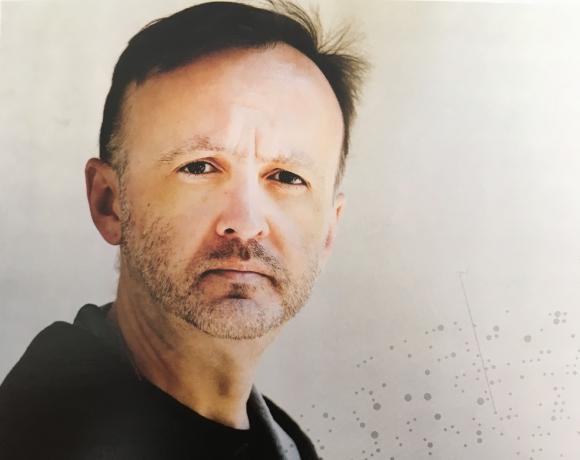Melanoma Research
Irene S Yu, Kathleen Wee, Laura Williamson , Emma Titmuss, Jianghong An, Sheida Naderi-Azad, Corey Metcalf, Stephen Yip, Basil Horst, Steven J M Jones, Katherine Paton, Brad H Nelson, Marco Marra, Janessa J Laskin, Kerry J Savage.
Uveal melanoma is the most common intraocular malignancy and has a poor prognosis compared to other melanoma subtypes with a median overall survival of 6-10 months. With immune checkpoint inhibitor therapy, either PD-1 inhibitor alone or combination ipilimumab/nivolumab (anti-CTLA-4/anti-PD-1), responses are rare and often not durable. We present a case report of a now 66-year-old woman with diffuse metastatic uveal melanoma previously treated with a combination of ipilimumab/nivolumab, followed by maintenance nivolumab. Almost complete resolution of all sites of metastatic disease was observed except for one liver metastasis which regressed partially on immunotherapy. Notably, the patient had a significantly elevated BMI and developed widespread vitiligo on treatment. Whole-genome and transcriptome analysis was performed on the residual liver biopsy and molecular markers that may have contributed to the exceptional response were investigated. Several alterations were observed in genes involved in T-cell responses. Estimates of tumour infiltrating immune cells indicated a high level of plasma cells compared to other uveal melanoma cases, a finding previously associated with indolent disease. The patient also carried several germline SNPs that may have contributed to her treatment response as well as widespread vitiligo. Whole-genome and transcriptome sequencing have provided insight into potential molecular underpinnings of an exceptional treatment response in a tumour type typically associated with poor prognosis. Immunological findings suggest a role for plasma cells in the tumour microenvironment. Elevated BMI and the development of vitiligo may be clinically relevant factors for predicting response to immune checkpoint inhibitor therapy, warranting further studies in patients with uveal melanoma.
J Appl Lab Med
Robin JN Coope, Nancy Matic, Pawan K Pandoh, Richard D Corbett, Duane E Smailus, Stephen Pleasance, Christopher F Lowe, Gordon Ritchie, Samuel D Chorlton, Matthew Young, Adrian A Ally, Jennifer K Asano, Rebecca E Carlsen, Sundeep S Chahal, Yongjun Zhao, Daniel T Holmes, Marc G Romney, Steven JM Jones, Marco A Marra.
Background: To support the implementation of high-throughput pipelines suitable for SARS-CoV-2 sequencing and analysis in a clinical laboratory, we developed an automated sample preparation and analysis workflow.
Methods: We used the established ARTIC protocol with ∼400 bp amplicons sequenced on Oxford Nanopore's MinION. Sequences were analyzed using Nextclade, assigning both a clade and quality score to each sample.
Results: 2,179 samples on twenty-five 96-well plates were sequenced. Plates of purified RNA were processed within 12 hours, sequencing required up to 24 hours and analysis of each pooled plate required one hour. The use of samples with known Ct values enabled normalization, acted as a QC check, and revealed a strong correlation between sample Ct values and successful analysis, with 85% of samples with Ct < 30 achieving a "Good" Nexclade score. Less abundant samples responded to enrichment with the fraction of Ct > 30 samples achieving a "Good" classification rising by 60% after addition of a post-ARTIC PCR normalization. Serial dilutions of three variant of concern samples, diluted from Ct∼16 to Ct∼50, demonstrated successful sequencing to Ct 37. The sample set contained a median of 24 mutations per sample and a total of 1,281 unique mutations with reduced sequence read coverage noted in some regions of some samples. A total of ten separate strains were observed in the sample set, including three variants of concern prevalent in British Columbia in the spring of 2021.
Conclusions: We demonstrated a robust automated sequencing pipeline that takes advantage of input Ct values to improve reliability.
Annals of Oncology
Pleasance E, Bohm A, Williamson LM, Nelson JMT, Shen Y, Bonakdar M, Titmuss E, Csizmok V, Wee K, Hosseinzadeh S, Grisdale CJ, Reisle C, Taylor GA, Lewis E, Jones MR, Bleile D, Sadeghi S, Zhang W, Davies A, Pellegrini B, Wong T, Bowlby R, Chan SK, Mungall KL, Chuah E, Mungall AJ, Moore RA, Zhao Y, Deol B, Fisic A, Fok A, Regier DA, Weymann D, Schaeffer DF, Young S, Yip S, Schrader K, Levasseur N, Taylor SK, Feng X, Tinker A, Savage KJ, Chia S, Gelmon K, Sun S, Lim H, Renouf DJ, Jones SJM, Marra MA, Laskin J.
Background: Recent advances are enabling delivery of precision genomic medicine to cancer clinics. While the majority of approaches profile panels of selected genes or hotspot regions, comprehensive data provided by whole genome and transcriptome sequencing and analysis (WGTA) presents an opportunity to align a much larger proportion of patients to therapies.
Patients and methods: Samples from 570 patients with advanced or metastatic cancer of diverse types enrolled in the Personalized OncoGenomics (POG) program underwent WGTA. DNA-based data, including mutations, copy number, and mutation signatures, were combined with RNA-based data, including gene expression and fusions, to generate comprehensive WGTA profiles. A multidisciplinary molecular tumour board used WGTA profiles to identify and prioritize clinically actionable alterations and inform therapy. Patient responses to WGTA-informed therapies were collected.
Results: Clinically actionable targets were identified for 83% of patients, 37% of whom received WGTA-informed treatments. RNA expression data were particularly informative, contributing to 67% of WGTA-informed treatments; 25% of treatments were informed by RNA expression alone. Of a total 248 WGTA-informed treatments, 46% resulted in clinical benefit. RNA expression data were comparable to DNA-based mutation and copy number data in aligning to clinically beneficial treatments. Genome signatures also guided therapeutics including platinum, PARP inhibitors, and immunotherapies. Patients accessed WGTA-informed treatments through clinical trials (19%), off-label use (35%), and as standard therapies (46%) including those which would not otherwise have been the next choice of therapy, demonstrating the utility of genomic information to direct use of chemotherapies as well as targeted therapies.
Conclusions: Integrating RNA expression and genome data illuminated treatment options that resulted in 46% of treated patients experiencing positive clinical benefit, supporting the use of comprehensive WGTA profiling in clinical cancer care.
Journal of Molecular Diagnostics
Tammy TY Lau, Zahra Jalali Sefid Dashti, Emma Titmuss, Alexandra Pender, James T Topham, Joshua Bridgers, Jonathan M Loree, Xiaolan Feng, Erin D Pleasance, Daniel J Renouf, Kasmintan A Schrader, Sophie Sun, Cheryl Ho, Marco Marra, Janessa Laskin, Aly Karsan
Tumor mutation burden (TMB) is a measure to predict patient responsiveness to immune checkpoint immunotherapy since with increased mutation frequency, the likelihood of a greater neoantigen burden is increased. Although neoantigen prediction tools exist, tumor neoantigen burden (TNB) has not been adopted as measures to predict immunotherapy response. With both measures, current guidelines are limited to the coding regions, but ectopic expression of sequences in the noncoding space may potentially be a source of neoantigens. Here we analyzed a pan-cancer cohort of 574 advanced disease stage patients with whole genome and transcriptome sequencing to report mutation burden and neoantigen counts within the coding and noncoding regions. We evaluated the efficacy of TNB, reported as tumor neoantigen counts (TNC), including neoantigens derived from the expression of noncoding regions, compared to TMB as a predictor of response to immunotherapy for 80 patients who had received treatment. We found that TMB was the best predictor of response to immunotherapy, whereas expression derived TNC from the noncoding regions did not improve prediction of response. Therefore, there is minimal benefit in extending the calculation of TNC to the noncoding space for the purposes of predicting response. However, it is likely that there is a wealth of neoantigens derived from the noncoding space that may impact patient outcomes and treatments.
Cancer Cell
Véronique G LeBlanc, Diane L Trinh, Shaghayegh Aslanpour, Martha Hughes, Dorothea Livingstone, Dan Jin, Bo Young Ahn, Michael D Blough, J Gregory Cairncross, Jennifer A Chan, John J P Kelly, Marco A Marra
Glioblastomas (GBMs) are aggressive brain tumors characterized by extensive inter- and intratumor heterogeneity. Patient-derived models, such as organoids and explants, have recently emerged as useful models to study such heterogeneity, although the extent to which they can recapitulate GBM genomic features remains unclear. Here, we analyze bulk exome and single-cell genome and transcriptome profiles of 12 IDH wild-type GBMs, including two recurrent tumors, and of patient-derived explants (PDEs) and gliomasphere (GS) lines derived from these tumors. We find that PDEs are genetically similar to, and variably retain gene expression characteristics of, their parent tumors. Notably, PDEs appear to exhibit similar levels of transcriptional heterogeneity compared with their parent tumors, whereas GS lines tend to be enriched for cells in a more uniform transcriptional state. The approaches and datasets introduced here will provide a valuable resource to help guide experiments using GBM-derived models, especially in the context of studying cellular heterogeneity.
Cancers
Dean A Regier, Brandon Chan, Sarah Costa, David W Scott, Christian Steidl, Joseph M Connors, Aly Karsan, Marco A Marra, Robert Kridel, Ian Cromwell, Samantha Pollard
Background: Classifying diffuse large B-cell lymphoma (DLBCL) into cell-of-origin (COO) subtypes could allow for personalized cancer control. Evidence suggests that subtype-guided treatment may be beneficial in the activated B-cell (ABC) subtype of DLBCL, among patients under the age of 60.
Methods: We estimated the cost-effectiveness of age- and subtype-specific treatment guided by gene expression profiling (GEP). A probabilistic Markov model examined costs and quality-adjusted life-years gained (QALY) accrued to patients under GEP-classified COO treatment over a 10-year time horizon. The model was calibrated to evaluate the adoption of ibrutinib as a first line treatment among patients under 60 years with ABC subtype DLBCL. The primary data source for efficacy was derived from published estimates of the PHOENIX trial. These inputs were supplemented with patient-level, real-world data from BC Cancer, which provides comprehensive cancer services to the population of British Columbia.
Results: We found the cost-effectiveness of GEP-guided treatment vs. standard care was $77,806 per QALY (24.3% probability of cost-effectiveness at a willingness-to-pay (WTP) of $50,000/QALY; 53.7% probability at a WTP of $100,000/QALY) for first-line treatment. Cost-effectiveness was dependent on assumptions around decision-makers' WTP and the cost of the assay.
Conclusions: We encourage further clinical trials to reduce uncertainty around the implementation of GEP-classified COO personalized treatment in this patient population.
Nature Communications
Caralyn Reisle, Laura M Williamson, Erin Pleasance, Anna Davies, Brayden Pellegrini, Dustin W Bleile, Karen L Mungall, Eric Chuah, Martin R Jones, Yussanne Ma, Eleanor Lewis, Isaac Beckie, David Pham, Raphael Matiello Pletz, Amir Muhammadzadeh, Brandon M Pierce, Jacky Li, Ross Stevenson, Hansen Wong, Lance Bailey, Abbey Reisle, Matthew Douglas, Melika Bonakdar, Jessica MT Nelson, Cameron J Grisdale, Martin Krzywinski, Ana Fisic, Teresa Mitchell, Daniel J Renouf, Stephen Yip, Janessa Laskin, Marco A Marra, Steven JM Jones
Manual interpretation of variants remains rate limiting in precision oncology. The increasing scale and complexity of molecular data generated from comprehensive sequencing of cancer samples requires advanced interpretative platforms as precision oncology expands beyond individual patients to entire populations. To address this unmet need, we introduce a Platform for Oncogenomic Reporting and Interpretation (PORI), comprising an analytic framework that facilitates the interpretation and reporting of somatic variants in cancer. PORI integrates reporting and graph knowledge base tools combined with support for manual curation at the reporting stage. PORI represents an open-source platform alternative to commercial reporting solutions suitable for comprehensive genomic data sets in precision oncology. We demonstrate the utility of PORI by matching 9,961 pan-cancer genome atlas tumours to the graph knowledge base, calculating therapeutically informative alterations, and making available reports describing select individual samples.
Nature Cancer
Laura M Richards, Owen KN Whitley, Graham MacLeod, Florence MG Cavalli, Fiona J Coutinho, Julia E Jaramillo, Nataliia Svergun, Mazdak Riverin, Danielle C Croucher, Michelle Kushida, Kenny Yu, Paul Guilhamon, Naghmeh Rastegar, Moloud Ahmadi, Jasmine K Bhatti, Danielle A Bozek, Naijin Li, Lilian Lee, Clare Che, Erika Luis, Nicole I Park, Zhiyu Xu, Troy Ketela, Richard A Moore, Marco A Marra, Julian Spears, Michael D Cusimano, Sunit Das, Mark Bernstein, Benjamin Haibe-Kains, Mathieu Lupien, H Artee Luchman, Samuel Weiss, Stephane Angers, Peter B Dirks, Gary D Bader, Trevor J Pugh
Glioblastomas harbor diverse cell populations, including rare glioblastoma stem cells (GSCs) that drive tumorigenesis. To characterize functional diversity within this population, we performed single-cell RNA sequencing on >69,000 GSCs cultured from the tumors of 26 patients. We observed a high degree of inter- and intra-GSC transcriptional heterogeneity that could not be fully explained by DNA somatic alterations. Instead, we found that GSCs mapped along a transcriptional gradient spanning two cellular states reminiscent of normal neural development and inflammatory wound response. Genome-wide CRISPR-Cas9 dropout screens independently recapitulated this observation, with each state characterized by unique essential genes. Further single-cell RNA sequencing of >56,000 malignant cells from primary tumors found that the majority organize along an orthogonal astrocyte maturation gradient yet retain expression of founder GSC transcriptional programs. We propose that glioblastomas grow out of a fundamental GSC-based neural wound response transcriptional program, which is a promising target for new therapy development.
NPJ Precision Oncology
Laura M Williamson, Craig M Rive, Daniela Di Francesco, Emma Titmuss, Hye-Jung E Chun, Scott D Brown, Katy Milne, Erin Pleasance, Anna F Lee, Stephen Yip, Daniel G Rosenbaum, Martin Hasselblatt, Pascal D Johann, Marcel Kool, Melissa Harvey, David Dix, Daniel J Renouf, Robert A Holt, Brad H Nelson, Martin Hirst, Steven JM Jones, Janessa Laskin, Shahrad R Rassekh, Rebecca J Deyell, Marco A Marra
Poorly differentiated chordoma (PDC) is a recently recognized subtype of chordoma characterized by expression of the embryonic transcription factor, brachyury, and loss of INI1. PDC primarily affects children and is associated with a poor prognosis and limited treatment options. Here we describe the molecular and immune tumour microenvironment profiles of two paediatric PDCs produced using whole-genome, transcriptome and whole-genome bisulfite sequencing (WGBS) and multiplex immunohistochemistry. Our analyses revealed the presence of tumour-associated immune cells, including CD8+ T cells, and expression of the immune checkpoint protein, PD-L1, in both patient samples. Molecular profiling provided the rationale for immune checkpoint inhibitor (ICI) therapy, which resulted in a clinical and radiographic response. A dominant T cell receptor (TCR) clone specific for a brachyury peptide-MHC complex was identified from bulk RNA sequencing, suggesting that targeting of the brachyury tumour antigen by tumour-associated T cells may underlie this clinical response to ICI. Correlative analysis with rhabdoid tumours, another INI1-deficient paediatric malignancy, suggests that a subset of tumours may share common immune phenotypes, indicating the potential for a therapeutically targetable subgroup of challenging paediatric cancers.
Cell Reports
Yiqun Zhang, Fengju Chen, Erin Pleasance, Laura Williamson, Cameron J Grisdale, Emma Titmuss, Janessa Laskin, Steven JM Jones, Isidro Cortes-Ciriano, Marco A Marra, Chad J Creighton
The global impact of somatic structural variants (SVs) on gene regulation in advanced tumors with complex treatment histories has been mostly uncharacterized. Here, using whole-genome and RNA sequencing from 570 recurrent or metastatic tumors, we report the altered expression of hundreds of genes in association with nearby SV breakpoints, including oncogenes and G-protein-coupled receptor-related genes such as PLEKHG2. A significant fraction of genes with SV-expression associations correlate with worse patient survival in primary and advanced cancers, including SRD5A1. In many instances, SV-expression associations involve retrotransposons being translocated near genes. High overall SV burden is associated with treatment with DNA alkylating agents or taxanes and altered expression of metabolism-associated genes. SV-expression associations within tumors from topoisomerase I inhibitor-treated patients include chromatin-related genes. Within anthracycline-treated tumors, SV breakpoints near chromosome 1p genes include PDE4B. Patient treatment and history can help understand the widespread SV-mediated cis-regulatory alterations found in cancer.
The Journal of Pathology
Stephen D Lee, Jungeun Song, Veronique G LeBlanc, Marco A Marra
Capicua (CIC)'s transcriptional repressor function is implicated in neurodevelopment and in oligodendroglioma (ODG) aetiology. However, CIC's role in these contexts remains obscure, primarily from our currently limited knowledge regarding its biological functions. Moreover, CIC mutations in ODG invariably co-occur with a neomorphic IDH1/2 mutation, yet the functional relationship between these two genetic events is unknown. Here, we analysed models derived from an E6/E7/hTERT-immortalized (i.e. p53- and RB-deficient) normal human astrocyte cell line. To examine the consequences of CIC loss, we compared transcriptomic and epigenomic profiles between CIC wildtype and knockout cell lines, with and without mutant IDH1 expression. Our analyses revealed dysregulation of neurodevelopmental genes in association with CIC loss. CIC ChIP-seq was also performed to expand upon the currently limited ensemble of known CIC target genes. Among the newly identified direct CIC target genes were EPHA2 and ID1, whose functions are linked to neurodevelopment and the tumourigenicity of in vivo glioma tumour models. NFIA, a known mediator of gliogenesis, was discovered to be uniquely overexpressed in double mutant cells (CIC-knockout + IDH1-mutant). These results identify neurodevelopment and specific genes within this context as candidate targets through which CIC alterations may contribute to the progression of IDH-mutant gliomas. This article is protected by copyright. All rights reserved.
Cell Reports
Kevin C Yang, Steve E Kalloger, John J Aird, Michael KC Lee, Christopher Rushton, Karen L Mungall, Andrew J Mungall, Dongxia Gao, Christine Chow, Jing Xu, Joanna M Karasinska, Shane Colborne, Steven JM Jones, Jörg Schrader, Ryan D Morin, Jonathan M Loree, Marco A Marra, Daniel J Renouf, Gregg B Morin, David F Schaeffer, Sharon M Gorski
Pancreatic neuroendocrine neoplasms (PNENs) are biologically and clinically heterogeneous. Here, we use a multi-omics approach to uncover the molecular factors underlying this heterogeneity. Transcriptomic analysis of 84 PNEN specimens, drawn from two cohorts, is substantiated with proteomic profiling and identifies four subgroups: Proliferative, PDX1-high, Alpha cell-like and Stromal/Mesenchymal. The Proliferative subgroup, consisting of both well- and poorly differentiated specimens, is associated with inferior overall survival probability. The PDX1-high and Alpha cell-like subgroups partially resemble previously described subtypes, and we further uncover distinctive metabolism-related features in the Alpha cell-like subgroup. The Stromal/Mesenchymal subgroup exhibits molecular characteristics of YAP1/WWTR1(TAZ) activation suggestive of Hippo signaling pathway involvement in PNENs. Whole-exome sequencing reveals subgroup-enriched mutational differences, supported by activity inference analysis, and identifies hypermorphic proto-oncogene variants in 14.3% of sequenced PNENs. Our study reveals differences in cellular signaling axes that provide potential directions for PNEN patient stratification and treatment strategies.
Nature Cancer
Laura M Richards, Owen KN Whitley, Graham MacLeod, Florence MG Cavalli, Fiona J Coutinho, Julia E Jaramillo, Nataliia Svergun, Mazdak Riverin, Danielle C Croucher, Michelle Kushida, Kenny Yu, Paul Guilhamon, Naghmeh Rastegar, Moloud Ahmadi, Jasmine K Bhatti, Danielle A Bozek, Naijin Li, Lilian Lee, Clare Che, Erika Luis, Nicole I Park, Zhiyu Xu, Troy Ketela, Richard A Moore, Marco A Marra, Julian Spears, Michael D Cusimano, Sunit Das, Mark Bernstein, Benjamin Haibe-Kains, Mathieu Lupien, H Artee Luchman, Samuel Weiss, Stephane Angers, Peter B Dirks, Gary D Bader, Trevor J Pugh
Glioblastomas harbor diverse cell populations, including rare glioblastoma stem cells (GSCs) that drive tumorigenesis. To characterize functional diversity within this population, we performed single-cell RNA sequencing on >69,000 GSCs cultured from the tumors of 26 patients. We observed a high degree of inter- and intra-GSC transcriptional heterogeneity that could not be fully explained by DNA somatic alterations. Instead, we found that GSCs mapped along a transcriptional gradient spanning two cellular states reminiscent of normal neural development and inflammatory wound response. Genome-wide CRISPR–Cas9 dropout screens independently recapitulated this observation, with each state characterized by unique essential genes. Further single-cell RNA sequencing of >56,000 malignant cells from primary tumors found that the majority organize along an orthogonal astrocyte maturation gradient yet retain expression of founder GSC transcriptional programs. We propose that glioblastomas grow out of a fundamental GSC-based neural wound response transcriptional program, which is a promising target for new therapy development.
Learn more
Nature genetics, 2020
Gagliardi, Alessia, Porter, Vanessa L, Zong, Zusheng, Bowlby, Reanne, Titmuss, Emma, Namirembe, Constance, Griner, Nicholas B, Petrello, Hilary, Bowen, Jay, Chan, Simon K, Culibrk, Luka, Darragh, Teresa M, Stoler, Mark H, Wright, Thomas C, Gesuwan, Patee, Dyer, Maureen A, Ma, Yussanne, Mungall, Karen L, Jones, Steven J M, Nakisige, Carolyn, Novik, Karen, Orem, Jackson, Origa, Martin, Gastier-Foster, Julie M, Yarchoan, Robert, Casper, Corey, Mills, Gordon B, Rader, Janet S, Ojesina, Akinyemi I, Gerhard, Daniela S, Mungall, Andrew J, Marra, Marco A
Cervical cancer is the most common cancer affecting sub-Saharan African women and is prevalent among HIV-positive (HIV{{sup}}+{{/sup}}) individuals. No comprehensive profiling of cancer genomes, transcriptomes or epigenomes has been performed in this population thus far. We characterized 118 tumors from Ugandan patients, of whom 72 were HIV{{sup}}+{{/sup}}, and performed extended mutation analysis on an additional 89 tumors. We detected human papillomavirus (HPV)-clade-specific differences in tumor DNA methylation, promoter- and enhancer-associated histone marks, gene expression and pathway dysregulation. Changes in histone modification at HPV integration events were correlated with upregulation of nearby genes and endogenous retroviruses.
Cell, 2019
Laks, Emma, McPherson, Andrew, Zahn, Hans, Lai, Daniel, Steif, Adi, Brimhall, Jazmine, Biele, Justina, Wang, Beixi, Masud, Tehmina, Ting, Jerome, Grewal, Diljot, Nielsen, Cydney, Leung, Samantha, Bojilova, Viktoria, Smith, Maia, Golovko, Oleg, Poon, Steven, Eirew, Peter, Kabeer, Farhia, Ruiz de Algara, Teresa, Lee, So Ra, Taghiyar, M Jafar, Huebner, Curtis, Ngo, Jessica, Chan, Tim, Vatrt-Watts, Spencer, Walters, Pascale, Abrar, Nafis, Chan, Sophia, Wiens, Matt, Martin, Lauren, Scott, R Wilder, Underhill, T Michael, Chavez, Elizabeth, Steidl, Christian, Da Costa, Daniel, Ma, Yussanne, Coope, Robin J N, Corbett, Richard, Pleasance, Stephen, Moore, Richard, Mungall, Andrew J, Mar, Colin, Cafferty, Fergus, Gelmon, Karen, Chia, Stephen, , , Marra, Marco A, Hansen, Carl, Shah, Sohrab P, Aparicio, Samuel
Accurate measurement of clonal genotypes, mutational processes, and replication states from individual tumor-cell genomes will facilitate improved understanding of tumor evolution. We have developed DLP+, a scalable single-cell whole-genome sequencing platform implemented using commodity instruments, image-based object recognition, and open source computational methods. Using DLP+, we have generated a resource of 51,926 single-cell genomes and matched cell images from diverse cell types including cell lines, xenografts, and diagnostic samples with limited material. From this resource we have defined variation in mitotic mis-segregation rates across tissue types and genotypes. Analysis of matched genomic and image measurements revealed correlations between cellular morphology and genome ploidy states. Aggregation of cells sharing copy number profiles allowed for calculation of single-nucleotide resolution clonal genotypes and inference of clonal phylogenies and avoided the limitations of bulk deconvolution. Finally, joint analysis over the above features defined clone-specific chromosomal aneuploidy in polyclonal populations.
Cell reports, 2019
Chun, Hye-Jung E, Johann, Pascal D, Milne, Katy, Zapatka, Marc, Buellesbach, Annette, Ishaque, Naveed, Iskar, Murat, Erkek, Serap, Wei, Lisa, Tessier-Cloutier, Basile, Lever, Jake, Titmuss, Emma, Topham, James T, Bowlby, Reanne, Chuah, Eric, Mungall, Karen L, Ma, Yussanne, Mungall, Andrew J, Moore, Richard A, Taylor, Michael D, Gerhard, Daniela S, Jones, Steven J M, Korshunov, Andrey, Gessler, Manfred, Kerl, Kornelius, Hasselblatt, Martin, Frühwald, Michael C, Perlman, Elizabeth J, Nelson, Brad H, Pfister, Stefan M, Marra, Marco A, Kool, Marcel
Extra-cranial malignant rhabdoid tumors (MRTs) and cranial atypical teratoid RTs (ATRTs) are heterogeneous pediatric cancers driven primarily by SMARCB1 loss. To understand the genome-wide molecular relationships between MRTs and ATRTs, we analyze multi-omics data from 140 MRTs and 161 ATRTs. We detect similarities between the MYC subgroup of ATRTs (ATRT-MYC) and extra-cranial MRTs, including global DNA hypomethylation and overexpression of HOX genes and genes involved in mesenchymal development, distinguishing them from other ATRT subgroups that express neural-like features. We identify five DNA methylation subgroups associated with anatomical sites and SMARCB1 mutation patterns. Groups 1, 3, and 4 exhibit cytotoxic T cell infiltration and expression of immune checkpoint regulators, consistent with a potential role for immunotherapy in rhabdoid tumor patients.
Proceedings of the National Academy of Sciences of the United States of America, 2019
Shen, Yaoqing, Grisdale, Cameron J, Islam, Sumaiya A, Bose, Pinaki, Lever, Jake, Zhao, Eric Y, Grinshtein, Natalie, Ma, Yussanne, Mungall, Andrew J, Moore, Richard A, Lun, Xueqing, Senger, Donna L, Robbins, Stephen M, Wang, Alice Yijun, MacIsaac, Julia L, Kobor, Michael S, Luchman, H Artee, Weiss, Samuel, Chan, Jennifer A, Blough, Michael D, Kaplan, David R, Cairncross, J Gregory, Marra, Marco A, Jones, Steven J M
Glioblastoma multiforme (GBM) is the most deadly brain tumor, and currently lacks effective treatment options. Brain tumor-initiating cells (BTICs) and orthotopic xenografts are widely used in investigating GBM biology and new therapies for this aggressive disease. However, the genomic characteristics and molecular resemblance of these models to GBM tumors remain undetermined. We used massively parallel sequencing technology to decode the genomes and transcriptomes of BTICs and xenografts and their matched tumors in order to delineate the potential impacts of the distinct growth environments. Using data generated from whole-genome sequencing of 201 samples and RNA sequencing of 118 samples, we show that BTICs and xenografts resemble their parental tumor at the genomic level but differ at the mRNA expression and epigenomic levels, likely due to the different growth environment for each sample type. These findings suggest that a comprehensive genomic understanding of in vitro and in vivo GBM model systems is crucial for interpreting data from drug screens, and can help control for biases introduced by cell-culture conditions and the microenvironment in mouse models. We also found that lack of expression in pretreated GBM is linked to hypermutation, which in turn contributes to increased genomic heterogeneity and requires new strategies for GBM treatment.
Cold Spring Harbor molecular case studies, 2019
Wong, Derek, Shen, Yaoqing, Levine, Adrian B, Pleasance, Erin, Jones, Martin, Mungall, Karen, Thiessen, Brian, Toyota, Brian, Laskin, Janessa, Jones, Steven J M, Marra, Marco A, Yip, Stephen
Effective management of brain and spine tumors relies on a multidisciplinary approach encompassing surgery, radiation, and systemic therapy. In the era of personalized oncology, the latter is complemented by various molecularly targeting agents. Precise identification of cellular targets for these drugs requires comprehensive profiling of the cancer genome coupled with an efficient analytic pipeline, leading to an informed decision on drug selection, prognosis, and confirmation of the original pathological diagnosis. Acquisition of optimal tumor tissue for such analysis is paramount and often presents logistical challenges in neurosurgery. Here, we describe the experience and results of the Personalized OncoGenomics (POG) program with a focus on tumors of the central nervous system (CNS). Patients with recurrent CNS tumors were consented and enrolled into the POG program prior to accrual of tumor and matched blood followed by whole-genome and transcriptome sequencing and processing through the POG bioinformatic pipeline. Sixteen patients were enrolled into POG. In each case, POG analyses identified genomic drivers including novel oncogenic fusions, aberrant pathways, and putative therapeutic targets. POG has highlighted that personalized oncology is truly a multidisciplinary field, one in which neurosurgeons must play a vital role if these programs are to succeed and benefit our patients.
BioTechniques, 2019
Pandoh, Pawan K, Corbett, Richard D, McDonald, Helen, Alcaide, Miguel, Kirk, Heather, Trinh, Eva, Haile, Simon, MacLeod, Tina, Smailus, Duane, Bilobram, Steve, Mungall, Andrew J, Ma, Yussanne, Moore, Richard A, Coope, Robin, Zhao, Yongjun, Jones, Steven Jm, Holt, Robert A, Karsan, Aly, Morin, Ryan D, Marra, Marco A
The analysis of cell-free circulating tumor DNA (ctDNA) is potentially a less invasive, more dynamic assessment of cancer progression and treatment response than characterizing solid tumor biopsies. Standard isolation methods require separation of plasma by centrifugation, a time-consuming step that complicates automation. To address these limitations, we present an automatable magnetic bead-based ctDNA isolation method that eliminates centrifugation to purify ctDNA directly from peripheral blood (PB). To develop and test our method, ctDNA from cancer patients was purified from PB and plasma. We found that allelic fractions of somatic single-nucleotide variants from target gene capture libraries were comparable, indicating that the PB ctDNA purification method may be a suitable replacement for the plasma-based protocols currently in use.
PloS one, 2019
Haile, Simon, Corbett, Richard D, Bilobram, Steve, Mungall, Karen, Grande, Bruno M, Kirk, Heather, Pandoh, Pawan, MacLeod, Tina, McDonald, Helen, Bala, Miruna, Coope, Robin J, Moore, Richard A, Mungall, Andrew J, Zhao, Yongjun, Morin, Ryan D, Jones, Steven J, Marra, Marco A
Next generation RNA-sequencing (RNA-seq) is a flexible approach that can be applied to a range of applications including global quantification of transcript expression, the characterization of RNA structure such as splicing patterns and profiling of expressed mutations. Many RNA-seq protocols require up to microgram levels of total RNA input amounts to generate high quality data, and thus remain impractical for the limited starting material amounts typically obtained from rare cell populations, such as those from early developmental stages or from laser micro-dissected clinical samples. Here, we present an assessment of the contemporary ribosomal RNA depletion-based protocols, and identify those that are suitable for inputs as low as 1-10 ng of intact total RNA and 100-500 ng of partially degraded RNA from formalin-fixed paraffin-embedded tissues.
Cold Spring Harbor molecular case studies, 2018
Ko, Jenny J, Grewal, Jasleen K, Ng, Tony, Lavoie, Jean-Michel, Thibodeau, My Linh, Shen, Yaoqing, Mungall, Andrew J, Taylor, Greg, Schrader, Kasmintan A, Jones, Steven J M, Kollmannsberger, Christian, Laskin, Janessa, Marra, Marco A
Thyroid-like follicular renal cell carcinoma (TLFRCC) is a rare cancer with few reports of metastatic disease. Little is known regarding genomic characteristics and therapeutic targets. We present the clinical, pathologic, genomic, and transcriptomic analyses of a case of a 27-yr-old male with TLFRCC who presented initially with bone metastases of unknown primary. Genomic DNA from peripheral blood and metastatic tumor samples were sequenced. A transcriptome of 280 million sequence reads was generated from the same tumor sample. Tumor somatic expression profiles were analyzed to detect aberrant expression. Genomic and transcriptomic data sets were integrated to reveal dysregulation in pathways and identify potential therapeutic targets. Integrative genomic analysis with The Cancer Genome Atlas (TCGA) data set revealed the following outliers in gene expression profiles: (81st percentile), (99th percentile), (100th percentile), and (99th and 100th percentiles, respectively), and (86th percentile). The patient received first-line sunitinib to target PDGFRA and PDGFRB and had stable disease for >6 mo, followed by nivolumab upon progression. To the authors' knowledge, this is the first reported case of comprehensive somatic genomic analyses in a patient with metastatic TLFRCC. Somatic analyses provided molecular confirmation of the primary site of cancer and potential therapeutic strategies in a rare disease with little evidence of efficacy on systemic therapy.
Nature, 2018
Alexander, Thomas B, Gu, Zhaohui, Iacobucci, Ilaria, Dickerson, Kirsten, Choi, John K, Xu, Beisi, Payne-Turner, Debbie, Yoshihara, Hiroki, Loh, Mignon L, Horan, John, Buldini, Barbara, Basso, Giuseppe, Elitzur, Sarah, de Haas, Valerie, Zwaan, C Michel, Yeoh, Allen, Reinhardt, Dirk, Tomizawa, Daisuke, Kiyokawa, Nobutaka, Lammens, Tim, De Moerloose, Barbara, Catchpoole, Daniel, Hori, Hiroki, Moorman, Anthony, Moore, Andrew S, Hrusak, Ondrej, Meshinchi, Soheil, Orgel, Etan, Devidas, Meenakshi, Borowitz, Michael, Wood, Brent, Heerema, Nyla A, Carrol, Andrew, Yang, Yung-Li, Smith, Malcolm A, Davidsen, Tanja M, Hermida, Leandro C, Gesuwan, Patee, Marra, Marco A, Ma, Yussanne, Mungall, Andrew J, Moore, Richard A, Jones, Steven J M, Valentine, Marcus, Janke, Laura J, Rubnitz, Jeffrey E, Pui, Ching-Hon, Ding, Liang, Liu, Yu, Zhang, Jinghui, Nichols, Kim E, Downing, James R, Cao, Xueyuan, Shi, Lei, Pounds, Stanley, Newman, Scott, Pei, Deqing, Guidry Auvil, Jaime M, Gerhard, Daniela S, Hunger, Stephen P, Inaba, Hiroto, Mullighan, Charles G
Mixed phenotype acute leukaemia (MPAL) is a high-risk subtype of leukaemia with myeloid and lymphoid features, limited genetic characterization, and a lack of consensus regarding appropriate therapy. Here we show that the two principal subtypes of MPAL, T/myeloid (T/M) and B/myeloid (B/M), are genetically distinct. Rearrangement of ZNF384 is common in B/M MPAL, and biallelic WT1 alterations are common in T/M MPAL, which shares genomic features with early T-cell precursor acute lymphoblastic leukaemia. We show that the intratumoral immunophenotypic heterogeneity characteristic of MPAL is independent of somatic genetic variation, that founding lesions arise in primitive haematopoietic progenitors, and that individual phenotypic subpopulations can reconstitute the immunophenotypic diversity in vivo. These findings indicate that the cell of origin and founding lesions, rather than an accumulation of distinct genomic alterations, prime tumour cells for lineage promiscuity. Moreover, these findings position MPAL in the spectrum of immature leukaemias and provide a genetically informed framework for future clinical trials of potential treatments for MPAL.
Journal of clinical oncology : official journal of the American Society of Clinical Oncology, 2017
Lim, Emilia L, Trinh, Diane L, Ries, Rhonda E, Wang, Jim, Gerbing, Robert B, Ma, Yussanne, Topham, James, Hughes, Maya, Pleasance, Erin, Mungall, Andrew J, Moore, Richard, Zhao, Yongjun, Aplenc, Richard, Sung, Lillian, Kolb, E Anders, Gamis, Alan, Smith, Malcolm, Gerhard, Daniela S, Alonzo, Todd A, Meshinchi, Soheil, Marra, Marco A
Purpose Children with acute myeloid leukemia (AML) whose disease is refractory to standard induction chemotherapy therapy or who experience relapse after initial response have dismal outcomes. We sought to comprehensively profile pediatric AML microRNA (miRNA) samples to identify dysregulated genes and assess the utility of miRNAs for improved outcome prediction. Patients and Methods To identify miRNA biomarkers that are associated with treatment failure, we performed a comprehensive sequence-based characterization of the pediatric AML miRNA landscape. miRNA sequencing was performed on 1,362 samples-1,303 primary, 22 refractory, and 37 relapse samples. One hundred sixty-four matched samples-127 primary and 37 relapse samples-were analyzed by using RNA sequencing. Results By using penalized lasso Cox proportional hazards regression, we identified 36 miRNAs the expression levels at diagnosis of which were highly associated with event-free survival. Combined expression of the 36 miRNAs was used to create a novel miRNA-based risk classification scheme (AMLmiR36). This new miRNA-based risk classifier identifies those patients who are at high risk (hazard ratio, 2.830; P ≤ .001) or low risk (hazard ratio, 0.323; P ≤ .001) of experiencing treatment failure, independent of conventional karyotype or mutation status. The performance of AMLmiR36 was independently assessed by using 878 patients from two different clinical trials (AAML0531 and AAML1031). Our analysis also revealed that miR-106a-363 was abundantly expressed in relapse and refractory samples, and several candidate targets of miR-106a-5p were involved in oxidative phosphorylation, a process that is suppressed in treatment-resistant leukemic cells. Conclusion To assess the utility of miRNAs for outcome prediction in patients with pediatric AML, we designed and validated a miRNA-based risk classification scheme. We also hypothesized that the abundant expression of miR-106a could increase treatment resistance via modulation of genes that are involved in oxidative phosphorylation.
Cell, 2017
Robertson, A Gordon, Kim, Jaegil, Al-Ahmadie, Hikmat, Bellmunt, Joaquim, Guo, Guangwu, Cherniack, Andrew D, Hinoue, Toshinori, Laird, Peter W, Hoadley, Katherine A, Akbani, Rehan, Castro, Mauro A A, Gibb, Ewan A, Kanchi, Rupa S, Gordenin, Dmitry A, Shukla, Sachet A, Sanchez-Vega, Francisco, Hansel, Donna E, Czerniak, Bogdan A, Reuter, Victor E, Su, Xiaoping, de Sa Carvalho, Benilton, Chagas, Vinicius S, Mungall, Karen L, Sadeghi, Sara, Pedamallu, Chandra Sekhar, Lu, Yiling, Klimczak, Leszek J, Zhang, Jiexin, Choo, Caleb, Ojesina, Akinyemi I, Bullman, Susan, Leraas, Kristen M, Lichtenberg, Tara M, Wu, Catherine J, Schultz, Nicholaus, Getz, Gad, Meyerson, Matthew, Mills, Gordon B, McConkey, David J, , , Weinstein, John N, Kwiatkowski, David J, Lerner, Seth P
We report a comprehensive analysis of 412 muscle-invasive bladder cancers characterized by multiple TCGA analytical platforms. Fifty-eight genes were significantly mutated, and the overall mutational load was associated with APOBEC-signature mutagenesis. Clustering by mutation signature identified a high-mutation subset with 75% 5-year survival. mRNA expression clustering refined prior clustering analyses and identified a poor-survival "neuronal" subtype in which the majority of tumors lacked small cell or neuroendocrine histology. Clustering by mRNA, long non-coding RNA (lncRNA), and miRNA expression converged to identify subsets with differential epithelial-mesenchymal transition status, carcinoma in situ scores, histologic features, and survival. Our analyses identified 5 expression subtypes that may stratify response to different treatments.
Nature genetics, 2017
Morrissy, A Sorana, Cavalli, Florence M G, Remke, Marc, Ramaswamy, Vijay, Shih, David J H, Holgado, Borja L, Farooq, Hamza, Donovan, Laura K, Garzia, Livia, Agnihotri, Sameer, Kiehna, Erin N, Mercier, Eloi, Mayoh, Chelsea, Papillon-Cavanagh, Simon, Nikbakht, Hamid, Gayden, Tenzin, Torchia, Jonathon, Picard, Daniel, Merino, Diana M, Vladoiu, Maria, Luu, Betty, Wu, Xiaochong, Daniels, Craig, Horswell, Stuart, Thompson, Yuan Yao, Hovestadt, Volker, Northcott, Paul A, Jones, David T W, Peacock, John, Wang, Xin, Mack, Stephen C, Reimand, Jüri, Albrecht, Steffen, Fontebasso, Adam M, Thiessen, Nina, Li, Yisu, Schein, Jacqueline E, Lee, Darlene, Carlsen, Rebecca, Mayo, Michael, Tse, Kane, Tam, Angela, Dhalla, Noreen, Ally, Adrian, Chuah, Eric, Cheng, Young, Plettner, Patrick, Li, Haiyan I, Corbett, Richard D, Wong, Tina, Long, William, Loukides, James, Buczkowicz, Pawel, Hawkins, Cynthia E, Tabori, Uri, Rood, Brian R, Myseros, John S, Packer, Roger J, Korshunov, Andrey, Lichter, Peter, Kool, Marcel, Pfister, Stefan M, Schüller, Ulrich, Dirks, Peter, Huang, Annie, Bouffet, Eric, Rutka, James T, Bader, Gary D, Swanton, Charles, Ma, Yusanne, Moore, Richard A, Mungall, Andrew J, Majewski, Jacek, Jones, Steven J M, Das, Sunit, Malkin, David, Jabado, Nada, Marra, Marco A, Taylor, Michael D
Spatial heterogeneity of transcriptional and genetic markers between physically isolated biopsies of a single tumor poses major barriers to the identification of biomarkers and the development of targeted therapies that will be effective against the entire tumor. We analyzed the spatial heterogeneity of multiregional biopsies from 35 patients, using a combination of transcriptomic and genomic profiles. Medulloblastomas (MBs), but not high-grade gliomas (HGGs), demonstrated spatially homogeneous transcriptomes, which allowed for accurate subgrouping of tumors from a single biopsy. Conversely, somatic mutations that affect genes suitable for targeted therapeutics demonstrated high levels of spatial heterogeneity in MB, malignant glioma, and renal cell carcinoma (RCC). Actionable targets found in a single MB biopsy were seldom clonal across the entire tumor, which brings the efficacy of monotherapies against a single target into question. Clinical trials of targeted therapies for MB should first ensure the spatially ubiquitous nature of the target mutation.
Cancer cell, 2016
Chun, Hye-Jung E, Lim, Emilia L, Heravi-Moussavi, Alireza, Saberi, Saeed, Mungall, Karen L, Bilenky, Mikhail, Carles, Annaick, Tse, Kane, Shlafman, Inna, Zhu, Kelsey, Qian, Jenny Q, Palmquist, Diana L, He, An, Long, William, Goya, Rodrigo, Ng, Michelle, LeBlanc, Veronique G, Pleasance, Erin, Thiessen, Nina, Wong, Tina, Chuah, Eric, Zhao, Yong-Jun, Schein, Jacquie E, Gerhard, Daniela S, Taylor, Michael D, Mungall, Andrew J, Moore, Richard A, Ma, Yussanne, Jones, Steven J M, Perlman, Elizabeth J, Hirst, Martin, Marra, Marco A
Malignant rhabdoid tumors (MRTs) are rare lethal tumors of childhood that most commonly occur in the kidney and brain. MRTs are driven by SMARCB1 loss, but the molecular consequences of SMARCB1 loss in extra-cranial tumors have not been comprehensively described and genomic resources for analyses of extra-cranial MRT are limited. To provide such data, we used whole-genome sequencing, whole-genome bisulfite sequencing, whole transcriptome (RNA-seq) and microRNA sequencing (miRNA-seq), and histone modification profiling to characterize extra-cranial MRTs. Our analyses revealed gene expression and methylation subgroups and focused on dysregulated pathways, including those involved in neural crest development.
Nature, 2012
Shah, Sohrab P, Roth, Andrew, Goya, Rodrigo, Oloumi, Arusha, Ha, Gavin, Zhao, Yongjun, Turashvili, Gulisa, Ding, Jiarui, Tse, Kane, Haffari, Gholamreza, Bashashati, Ali, Prentice, Leah M, Khattra, Jaswinder, Burleigh, Angela, Yap, Damian, Bernard, Virginie, McPherson, Andrew, Shumansky, Karey, Crisan, Anamaria, Giuliany, Ryan, Heravi-Moussavi, Alireza, Rosner, Jamie, Lai, Daniel, Birol, Inanc, Varhol, Richard, Tam, Angela, Dhalla, Noreen, Zeng, Thomas, Ma, Kevin, Chan, Simon K, Griffith, Malachi, Moradian, Annie, Cheng, S-W Grace, Morin, Gregg B, Watson, Peter, Gelmon, Karen, Chia, Stephen, Chin, Suet-Feung, Curtis, Christina, Rueda, Oscar M, Pharoah, Paul D, Damaraju, Sambasivarao, Mackey, John, Hoon, Kelly, Harkins, Timothy, Tadigotla, Vasisht, Sigaroudinia, Mahvash, Gascard, Philippe, Tlsty, Thea, Costello, Joseph F, Meyer, Irmtraud M, Eaves, Connie J, Wasserman, Wyeth W, Jones, Steven, Huntsman, David, Hirst, Martin, Caldas, Carlos, Marra, Marco A, Aparicio, Samuel
Primary triple-negative breast cancers (TNBCs), a tumour type defined by lack of oestrogen receptor, progesterone receptor and ERBB2 gene amplification, represent approximately 16% of all breast cancers. Here we show in 104 TNBC cases that at the time of diagnosis these cancers exhibit a wide and continuous spectrum of genomic evolution, with some having only a handful of coding somatic aberrations in a few pathways, whereas others contain hundreds of coding somatic mutations. High-throughput RNA sequencing (RNA-seq) revealed that only approximately 36% of mutations are expressed. Using deep re-sequencing measurements of allelic abundance for 2,414 somatic mutations, we determine for the first time-to our knowledge-in an epithelial tumour subtype, the relative abundance of clonal frequencies among cases representative of the population. We show that TNBCs vary widely in their clonal frequencies at the time of diagnosis, with the basal subtype of TNBC showing more variation than non-basal TNBC. Although p53 (also known as TP53), PIK3CA and PTEN somatic mutations seem to be clonally dominant compared to other genes, in some tumours their clonal frequencies are incompatible with founder status. Mutations in cytoskeletal, cell shape and motility proteins occurred at lower clonal frequencies, suggesting that they occurred later during tumour progression. Taken together, our results show that understanding the biology and therapeutic responses of patients with TNBC will require the determination of individual tumour clonal genotypes.
Genome biology, 2010
Jones, Steven Jm, Laskin, Janessa, Li, Yvonne Y, Griffith, Obi L, An, Jianghong, Bilenky, Mikhail, Butterfield, Yaron S, Cezard, Timothee, Chuah, Eric, Corbett, Richard, Fejes, Anthony P, Griffith, Malachi, Yee, John, Martin, Montgomery, Mayo, Michael, Melnyk, Nataliya, Morin, Ryan D, Pugh, Trevor J, Severson, Tesa, Shah, Sohrab P, Sutcliffe, Margaret, Tam, Angela, Terry, Jefferson, Thiessen, Nina, Thomson, Thomas, Varhol, Richard, Zeng, Thomas, Zhao, Yongjun, Moore, Richard A, Huntsman, David G, Birol, Inanc, Hirst, Martin, Holt, Robert A, Marra, Marco A
Adenocarcinomas of the tongue are rare and represent the minority (20 to 25%) of salivary gland tumors affecting the tongue. We investigated the utility of massively parallel sequencing to characterize an adenocarcinoma of the tongue, before and after treatment.
Science (New York, N.Y.), 2003
Marra, Marco A, Jones, Steven J M, Astell, Caroline R, Holt, Robert A, Brooks-Wilson, Angela, Butterfield, Yaron S N, Khattra, Jaswinder, Asano, Jennifer K, Barber, Sarah A, Chan, Susanna Y, Cloutier, Alison, Coughlin, Shaun M, Freeman, Doug, Girn, Noreen, Griffith, Obi L, Leach, Stephen R, Mayo, Michael, McDonald, Helen, Montgomery, Stephen B, Pandoh, Pawan K, Petrescu, Anca S, Robertson, A Gordon, Schein, Jacqueline E, Siddiqui, Asim, Smailus, Duane E, Stott, Jeff M, Yang, George S, Plummer, Francis, Andonov, Anton, Artsob, Harvey, Bastien, Nathalie, Bernard, Kathy, Booth, Timothy F, Bowness, Donnie, Czub, Martin, Drebot, Michael, Fernando, Lisa, Flick, Ramon, Garbutt, Michael, Gray, Michael, Grolla, Allen, Jones, Steven, Feldmann, Heinz, Meyers, Adrienne, Kabani, Amin, Li, Yan, Normand, Susan, Stroher, Ute, Tipples, Graham A, Tyler, Shaun, Vogrig, Robert, Ward, Diane, Watson, Brynn, Brunham, Robert C, Krajden, Mel, Petric, Martin, Skowronski, Danuta M, Upton, Chris, Roper, Rachel L
We sequenced the 29,751-base genome of the severe acute respiratory syndrome (SARS)-associated coronavirus known as the Tor2 isolate. The genome sequence reveals that this coronavirus is only moderately related to other known coronaviruses, including two human coronaviruses, HCoV-OC43 and HCoV-229E. Phylogenetic analysis of the predicted viral proteins indicates that the virus does not closely resemble any of the three previously known groups of coronaviruses. The genome sequence will aid in the diagnosis of SARS virus infection in humans and potential animal hosts (using polymerase chain reaction and immunological tests), in the development of antivirals (including neutralizing antibodies), and in the identification of putative epitopes for vaccine development.









